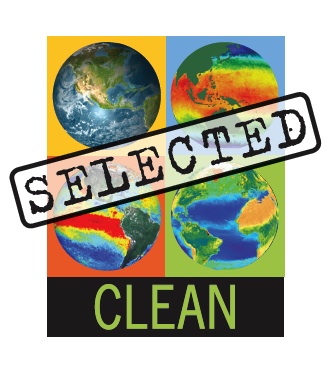Julia LaCava is a summer intern at the Concord Consortium. A junior at Ithaca College, she majors in communications.
Teaching about climate change in the age of the Internet is harder than you might think. “Many online climate change lessons are actually junk” was the bold title of a recent article published by AP News, which found that a majority of free online resources for educators are full of misinformation about climate change and human’s effect on it.
 Climate literacy is vital to understanding the importance of climate change as well as how humans can mitigate their effects, but how can teachers know what resources to trust? The Climate Literacy and Energy Awareness Network (CLEAN) reviewed over 30,000 free online resources and selected 700 as materials acceptable for use in the classroom. Their vetting process is extensive, taking into account the effectiveness of teaching with the activities and whether or not they align with educational benchmarks and national science standards.
Climate literacy is vital to understanding the importance of climate change as well as how humans can mitigate their effects, but how can teachers know what resources to trust? The Climate Literacy and Energy Awareness Network (CLEAN) reviewed over 30,000 free online resources and selected 700 as materials acceptable for use in the classroom. Their vetting process is extensive, taking into account the effectiveness of teaching with the activities and whether or not they align with educational benchmarks and national science standards.
Among their top picks is “What is the future of Earth’s climate?,” a module created at the Concord Consortium as part of our High-Adventure Science project and funded by the National Science Foundation. The climate module gives students an introduction to evidence and research about the factors that impact Earth’s climate. It features interactive computational models that allow students to change climate variables and observe outcomes. For example, students can use a model to see how solar radiation interacts with Earth’s surface and gases in the atmosphere, watching how radiation affects Earth’s temperature. Students are able to see emerging phenomena, such as the cooling effect clouds have on the Earth, in ways never possible before in science education.
 The climate module connects to the Next Generation Science Standards:
The climate module connects to the Next Generation Science Standards:
- Science and Engineering Practices: Engaging in argument from evidence, analyzing and interpreting data
- Disciplinary Core Ideas: ESS3.D: Global Climate Change, ESS2.D: Weather and Climate
- Crosscutting Concepts: Systems and system models
To uncover the big questions in Earth and environmental science, High-Adventure Science has created six modules that enable students to explore models and real-world data in a wide array of topics from climate change to the search for life outside our solar system. Teachers can use High-Adventure Science’s free online modules to engage students in climate literacy. The modules are also available on the National Geographic Education website, made possible by a partnership between the Concord Consortium and National Geographic Education. As a CLEAN-selected resource, the High-Adventure Science climate module is certified as high quality!